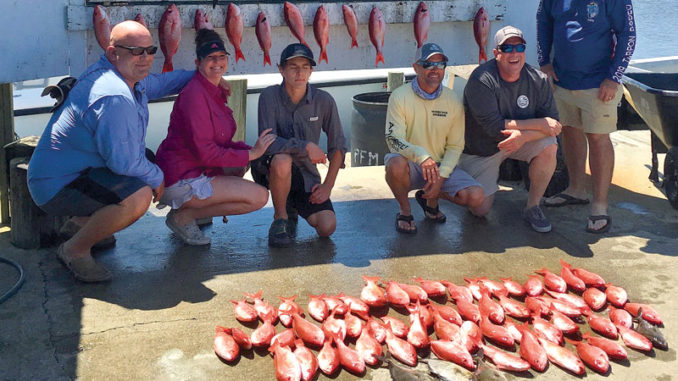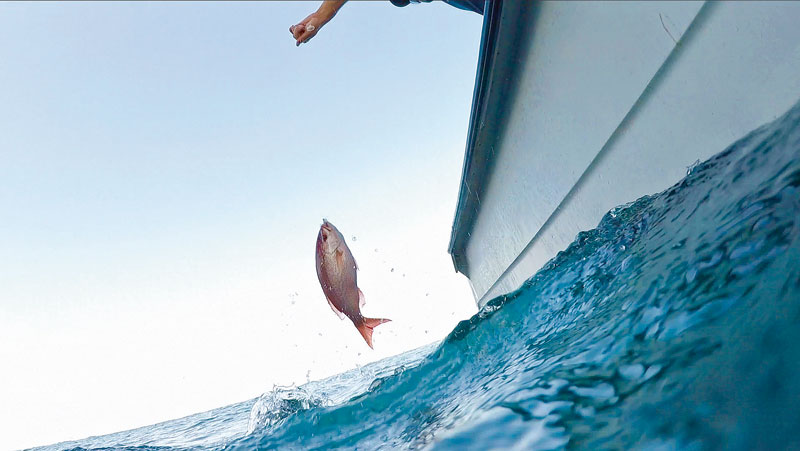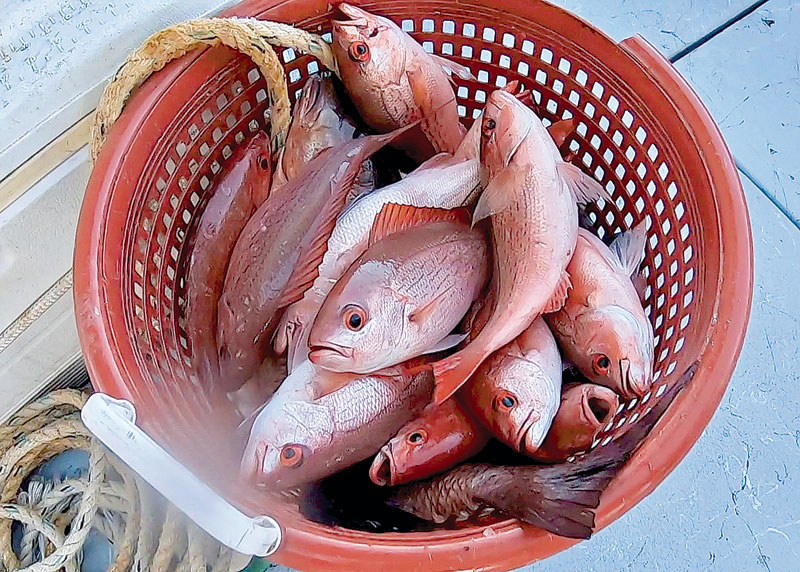
These tasty fish are a great second option for red snapper fishermen
For regular offshore anglers, catching a limit of red snapper is about as challenging as picking up an itchy rash while trolling Amsterdam’s red-light district. Such quick success leaves many out on the big water staring at the horizon, wondering what they can do next.
But Capt. Paul Guidroz of Tuna Time Charters doesn’t stress a moment this time of year when his holds are full of all the reds the law will let him keep. He simply turns his attention to a smaller and even more plentiful cousin of red snapper, vermilion snapper, known colloquially as beeliners.
The agreeable fish are always a hit with customers.
“They’re excellent table fare, and they don’t tear up your gear as much as, say, red snapper or mangrove snapper,” Guidroz said. “They’re not as big, so they’re not as likely to pull you into the rig, but they’re still fun to catch. Clients like them because they’re so good to eat.
“It’s another fish to put in the box when you go offshore.”
And they can flat-out fill up a box. Louisiana’s regulations allow anglers to keep 10 beeliners each, as long as the fish measure at least 10 inches. Those are liberal limits that keep anglers entertained for hours.
The year’s eighth month isn’t the peak of the beeliner run, but fishing is still excellent, Guidroz said.
“It’s always better in the spring, but it’s still quite good in August, particularly in the early part of the month,” he said. “They move a little bit deeper this time of year.”
In early August, the fish may be as shallow as 150 feet, but by the end, they’re typically down around 400 feet, Guidroz said.

“On rock piles, I like to fish them dead on the bottom,” he said. “On rigs, I like to fish them maybe 100 feet off the bottom.”
Guidroz will mark the fish with his electronics, and instruct his clients how far they should drop their baits.
“We use anywhere from 16 to 24 ounces of lead, depending on the current,” he said.
Even in the deepest of the beeliner zone, heavier weight isn’t needed because the fish are targeted with much lighter gear than that used for red snapper.
“I like 80-pound main line with smaller circle hooks and smaller baits, whether it’s squid, pogies or sardines,” Guidroz said.
His hooks of choice are No. 5 Mustad Demon circle hooks.
Once a bait gets down to the fish and one decides to munch it, that’s when the fun begins. Beeliners are exceptionally competitive, Guidroz said, and they get jealous when they see their neighbors filling their bellies.
“The main thing with beeliners is, once you find the school, you really need to keep fishing,” he said. “You need to keep baits in front of them. As long as you keep fishing, you’re going to keep catching them. If you stop, they’ll really slow down, and they might stop biting entirely.
“They school up really thick,” he said.
The fish are so cooperative that Guidroz often targets them first, even when red snapper season is open, because he knows he’ll likely bump into a few reds while he’s targeting beeliners. Once the beeliner limit is reached, he frequently doesn’t have to move the boat to fill his red snapper limit as well.
“They’re often in the same zone,” he said. “What we do when we want to eliminate the beeliners and catch only the reds, we’ll use bigger gear and bigger baits — something the beeliners can’t really get in their mouths. You might feel them hitting it, but when a red (snapper) comes along, he’ll just suck in the whole bait.”

Both species are excellent table fare, but beeliners are much more delicate than reds and have to be treated differently, Guidroz said.
“It’s a softer, flakier meat than red snapper or mangrove snapper, so I cook them less time,” he said. “They’re in the pan a lot less time than a red or mangrove.”
Are you legal?
Offshore regulations these days are more complex than Einstein’s Theory of Relativity, and that certainly applies to vermilion snapper. Each angler may keep 10 fish measuring at least 10 inches, which seems simple enough, but it’s a bit more complicated than that.
For regulation purposes, beeliners are part of a reef-fish aggregate that includes lane snapper, almaco jacks, grey triggerfish and tilefish. Anglers may keep no more than 20 of those fish combined, even if the limits for any one species are not yet met.
The only exception is during a multi-day charter trip, when each client may be in possession of a two-day limit of beeliners and other reef fish.
There is no closed season for vermilion snapper.